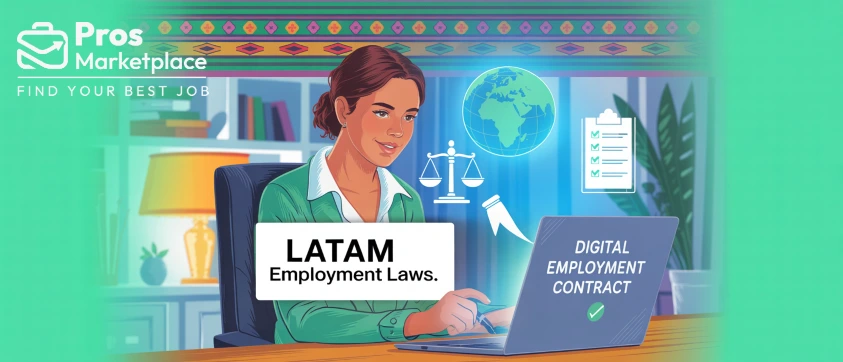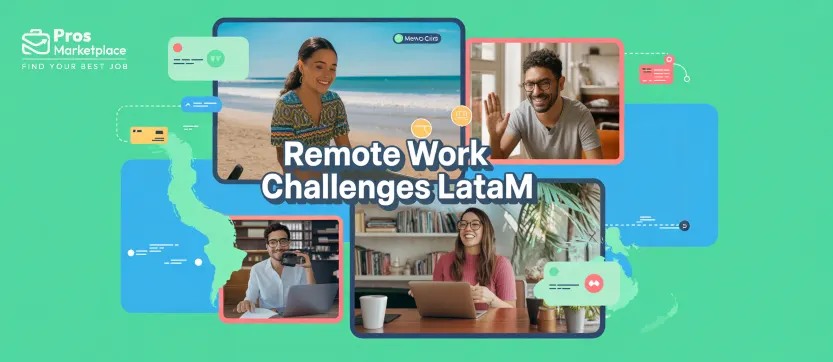A team holds the power to decide the future of a business. However, recruiting the right employees who make up a good team takes a lot of time.
That is why, hiring the process to recruit the best employees has become a must-have for the success of any business.
Recruiters focus on recruiting the right employees who contribute to growth. However, with so many candidates out there, choosing the right one can become difficult.
So, it is important to follow a structured hiring process to ensure that there is no discrimination and the workplace is positive and enjoyable.
Regardless of whether you are a start-up or have a long-standing business, consider this blog your guide on how to hire employees who will make your business profitable.
How to Recruit Employees in 6 Steps
A well-defined strategy is essential for recruiting the best employees. However, you do not need to worry about it anymore. Whether you are an experienced professional or are starting your recruitment journey, the below 6 steps by our experts make the process easier for you.
Step 1: Job Posting on the Right Platform
To attract the right candidates, make sure your job posting reaches a diverse audience by using the right platforms. These may include job boards, social media platforms, company websites, and others.
This is what your job post should include:
- Necessary skills, experience, and traits
- Opportunities for professional growth
- Daily Responsibilities of the Role
You can also discuss your company values like diversity and inclusion, and how they’re integrated into work and hiring practices.
The challenge here lies in conveying this information concisely. So maintain a balance between essential and additional requirements. It will help you craft an inclusive job description to avoid wrongfully excluding candidates.
Furthermore, don’t forget to review the job description to ensure it complies with laws and has no errors.
Step 2: Promoting Job Openings
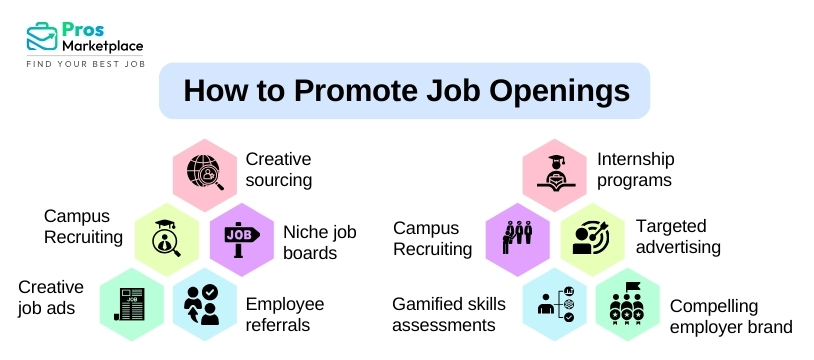
The effectiveness of a job description depends on reaching the right audience. It takes effort to ensure the optimal reach of the job posting. Starting with your immediate network is beneficial for small, new businesses.
Collaborating with recruitment agencies may be necessary when internal resources are exhausted, urgent hiring needs arise, specialized skills are required, or when building a geographically diverse team.
If utilizing job boards, platforms catering to specific demographic segments ensure inclusivity and signal an organizational commitment to equity.
Remember, a well-written job description attracts top-tier talent to your organization.
So clearly articulate the role’s duties, prerequisites, and anticipations with precision. Highlight the distinct features that make your company a promising workplace. Employ a writing style that resonates with your ideal candidate and showcases your corporate culture to attract the right candidates.
Step 3: Reviewing Applications
A compelling job advertisement may result in an influx of applications, posing a logistical challenge.
While technology aids in screening applications, it is not completely reliable. When employing automated screening mechanisms, adhere to guidelines to mitigate algorithmic bias:
- Thoughtful selection of screening criteria to avoid bias and illegal discrimination
- Regular audits of screening tools to detect latent biases
- Transparent communication with applicants about AI utilization in application screening processes
After receiving applications, it’s time to evaluate the candidates. This can be done based on several criteria, such as:
- Understanding of the company’s mission and the role’s significance
- Highlighted achievements and relevance
- Clarity and completeness of applications
- Alignment with organizational values
- Display of personality traits
- Patterns in past job experiences
- Signs of innovation and potential for growth
It’s important to remember that no single criterion should dictate a candidate’s evaluation. If an application raises questions despite an overall favorable impression, these questions should be noted for discussion during subsequent interview stages.
Step 4: Interviewing Candidates
After the initial application screening, the hiring process typically involves screening calls, interviews, and skills assessments, depending on the depth of candidate evaluation required.
Each stage of the hiring process should offer insights, and any unnecessary stages should be removed.
To gain insights into a candidate’s suitability, consider asking questions like:
- What kind of workplace environment do they prefer?
- How does their experience relate to the role?
- What are their long-term goals?
- Why are they looking to leave their current job?
- What are their strengths and weaknesses?
- Do they have any questions about the role or the organization?
Avoid discussions that could introduce biases or discriminatory considerations into the hiring process. So questions about a candidate’s race, ethnicity, religion, gender identity, etc., should be strictly prohibited.
Step 5: Making an Offer
Once the recruitment process concludes, extending a formal offer to the chosen candidate takes it one step forward. Here is what you should be careful about when making an offer:
- Decide how much money and what benefits are fair for the job.
- Have an open and honest conversation about the job and what they’ll get.
- Explain everything included in the job offer.
- Be ready for any special requests they might have.
Now comes the best part – welcoming your new team member!
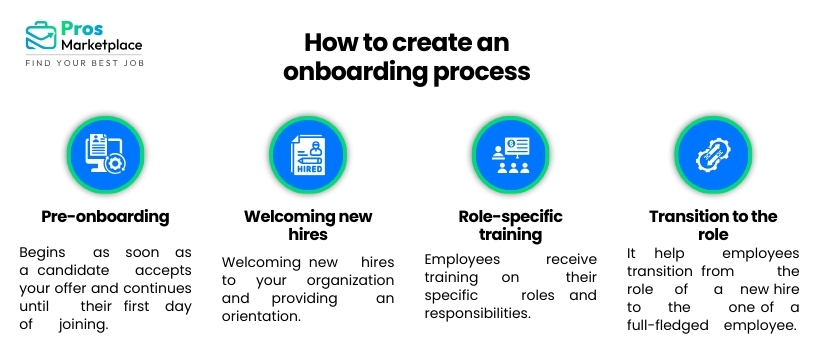
Step 6: Onboarding Process
A successful onboarding process is important for long-term growth, cultural fit, and employee impact.
When creating your onboarding process, decide if you want a flexible program or something more defined. For example, a flexible process may have your new employees going to a few meetings to learn about business culture. A more defined program would include a checklist of things for your employees to complete.
Your onboarding process should include information on:
- Company culture: This is where your employees learn important details to help them succeed at your business, like communicating clearly with colleagues and being collaborative.
- Training and development: This gives you an opportunity to map career paths and lets your employees know how they can grow at your company.
- Performance: Employees should know what’s expected from them. So clearly define their job roles and responsibilities.
Strategies for Recruiting the Right Employees
A positive company culture starts with valuing your employees. Your managerial style and how you interact with your employees and customers reflects that. So always be on the lookout for changes you can make to help make your business more positive. Follow the strategies below to make the right choice for your business.
1. Revamping the Interview Process
After you get applications, narrow your search and move your top candidates forward to the interview process. The interview is an essential step when hiring for startups. Don’t just conduct a traditional interview and ask them questions. Follow some interview best practices to help make the most informed decision and find great candidates who are a good cultural fit.
2. Continuous Evaluation and Refinement
Post-onboarding starts a cycle of performance evaluation and process refinement. Solicit feedback from the new hire and their supervisors to identify areas for enhancement and avenues for growth.
3. Conduct Methodical Interviews
Interviews serve as the platforms wherein candidates’ aptitudes and organizational compatibility are discussed. Equip yourself with a standardized set of inquiries tailored to get insights into candidates’ competencies, experiences, and cultural resonance. Employ interview methodologies to get insights into candidates’ past endeavors and problem-solving skills.

4. Build a Positive Company Culture
If your company culture suffers, it can affect your employees’ productivity and even cause them to leave your business. In fact, in a recent survey of 2,000 employees, 47% of workers were looking for new jobs because of company culture.
So from figuring out your startup’s purpose to encouraging a culture of teamwork, there are things you can do to create the company environment you want. This will not only help you attract the right employees but will also help you retain your valuable employees.
5. Seek Active Feedback
Whether from your customers or potential employees, feedback is a critical resource for your startup. Talk to your current workers and even those who went through employee termination, about their experiences when applying for a job with your startup. If there’s a common issue, you can fix it and improve the process for future candidates.
6. Using the Right Platform
If you use a job site or recruiter to find candidates, you can see which method was the most successful. If you hire more candidates sent to you by your startup recruiter, you can continue developing your relationship with them so they keep sending you talented people.
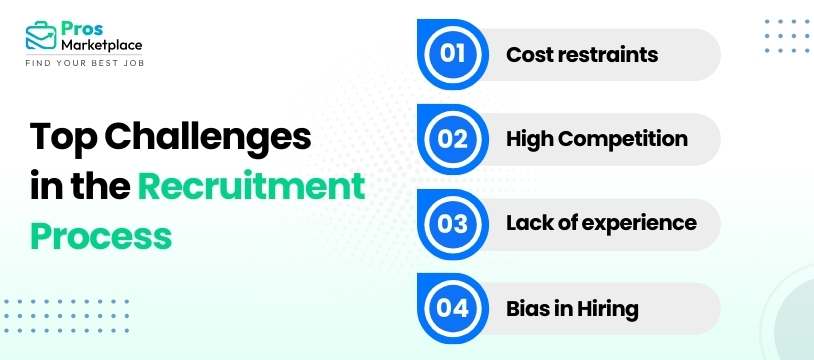
Challenges in the Recruitment Process
Sometimes recruiters do not make an informed choice regarding the correct way to reach the candidates. This can have serious consequences on your business. Here are some of the challenges that you can overcome by following the best practices above:
Cost restraints: Many times the recruiter wants to hire a certain number of qualified candidates or advertise a specific way regarding vacant job positions but cannot due to budget restraints. It’s best to strategize a long-term plan in such scenarios and hire employees as the company grows.
High Competition: In today’s job market, attracting top talent can be challenging due to competition from other employers offering similar roles and benefits.
Lack of experience: Finding candidates with the specific skills and experience required for certain roles can be difficult, especially in some industries where skills are not sufficient.
Bias in Hiring: Overcoming unconscious bias in the recruitment process, such as favoring candidates from similar backgrounds or experiences, poses a significant challenge in ensuring a fair and diverse workforce.
Conclusion
Building a successful company depends on finding the right people. It’s not just about writing job descriptions; It’s about building a team that shares your vision and supports the company’s growth. This requires not just qualifications, but a clear recruitment process. What are your core values? What kind of workplace are you creating? A clear understanding of your company’s culture allows you to create a job description that will attract people interested in your role.
The description should not just list the role, it should reflect the job’s suitability and career advancement potential. Does the candidate’s personality support your current team? Do they prefer to collaborate or work independently, depending on the needs of the business? It is also important to evaluate their growth potential. Does the candidate have a desire to learn and take on new challenges? Are they passionate about the business and willing to contribute their unique talents?
Although skills are important, consider including questions about behavior and situations. Ask candidates to describe how they have dealt with challenges or their approach to a particular task. This will give you insight into their problem-solving skills and thought processes. This investment in building a strong team will help your organization move toward its goals.






